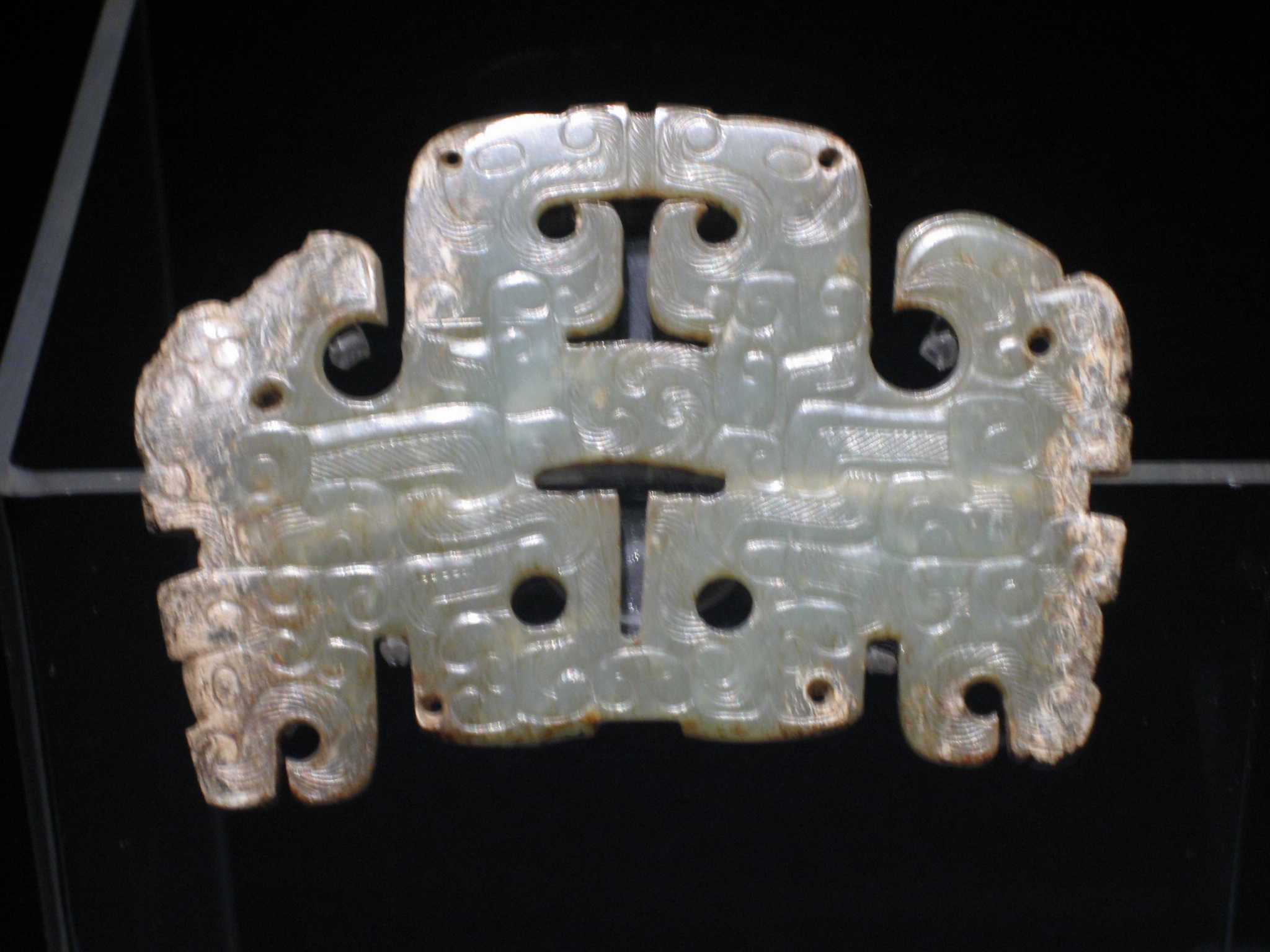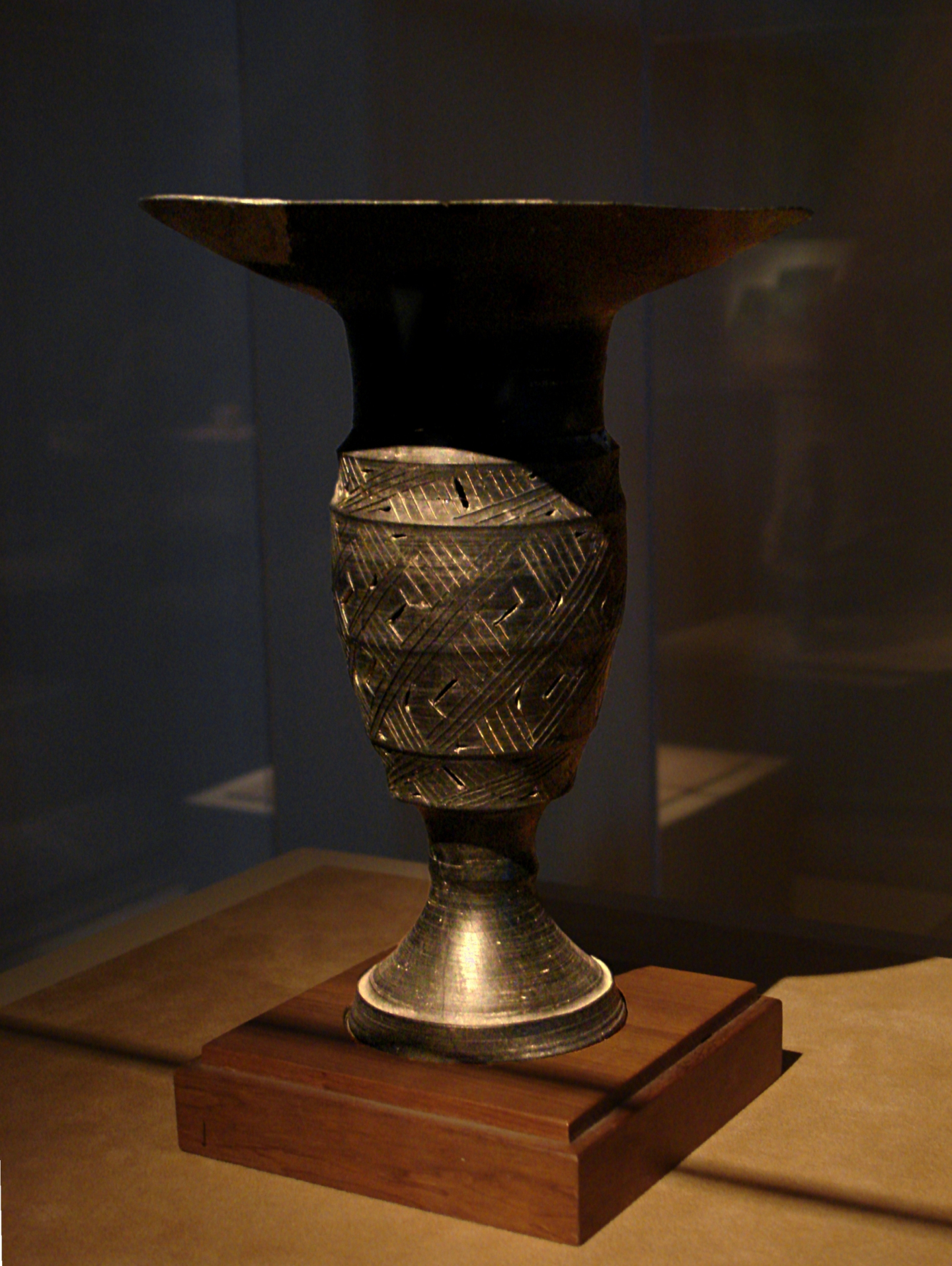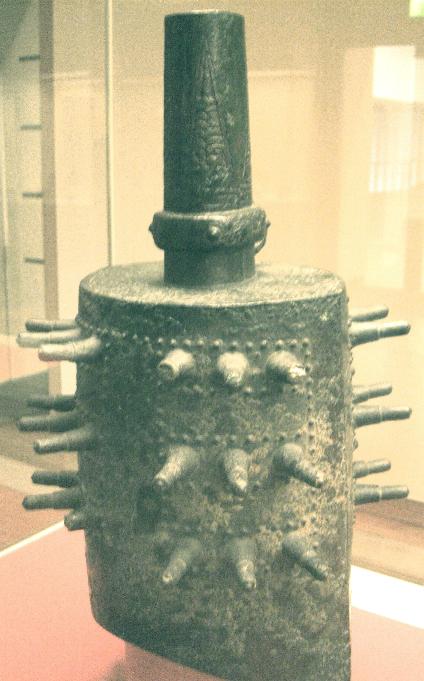|
Chinese jade ornament with dragon and phoenix design, late Spring and Autumn Period (722 BC-482 BC). 
Chinese jade ornament with dragon and phoenix design, late Spring and Autumn Period (722 BC-482 BC). Black eggshell pottery of the Longshan culture (c. 3000–2000 BC) 
Black eggshell pottery of the Longshan culture (c. 3000–2000 BC)
A Zhou Dynasty bronze musical bell 
A Zhou Dynasty bronze musical bell
Chu and Southern cultureA rich source of art in early China was the state of Chu, which developed in the Yangtze River valley. Excavations of Chu tombs have found painted wooden sculptures, jade disks, glass beads, musical instruments, and an assortment of lacquerware. Many of the lacquer objects are finely painted, red on black or black on red. A site in Changsha, Hunan province, has revealed some of the oldest paintings on silk discovered to date. |